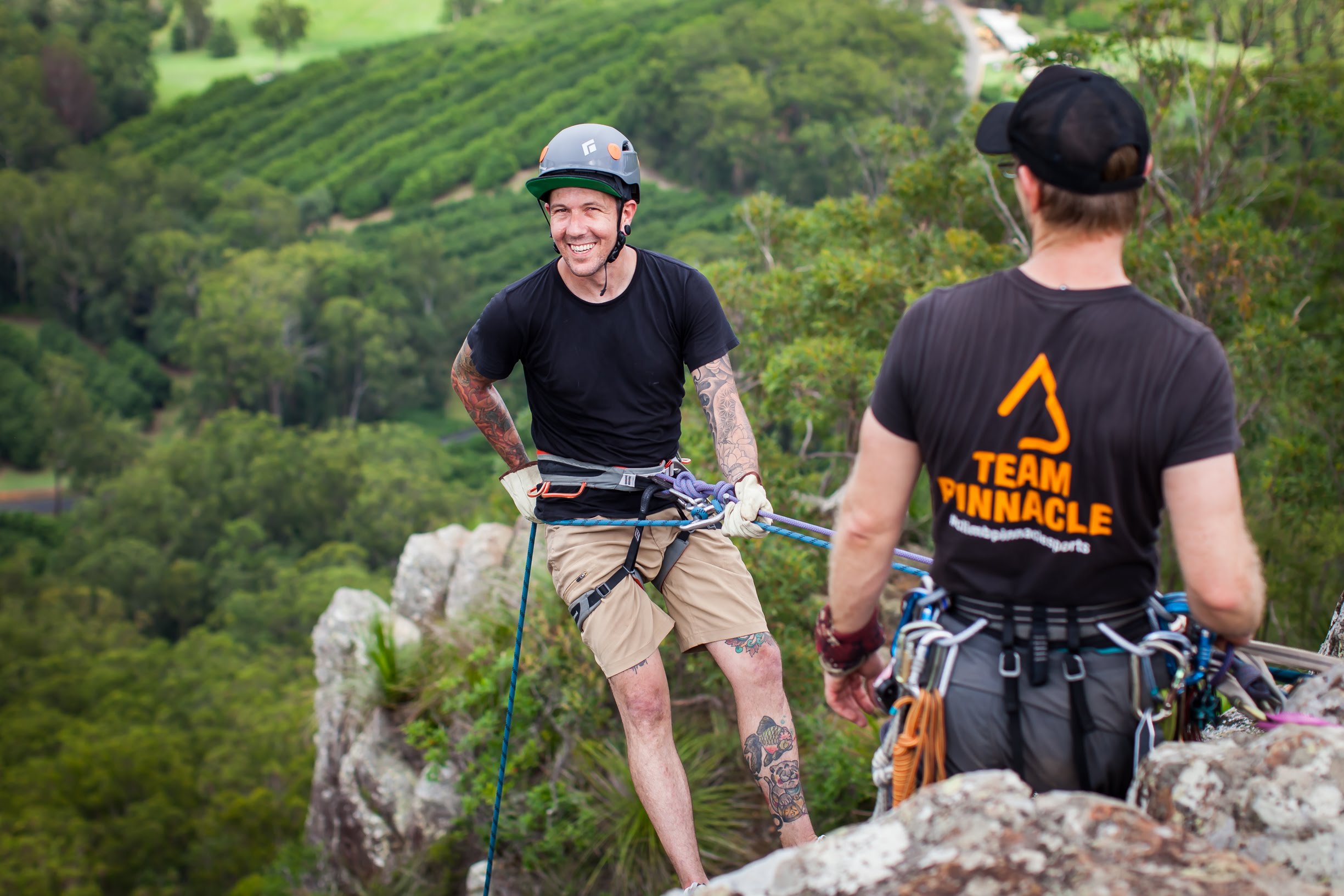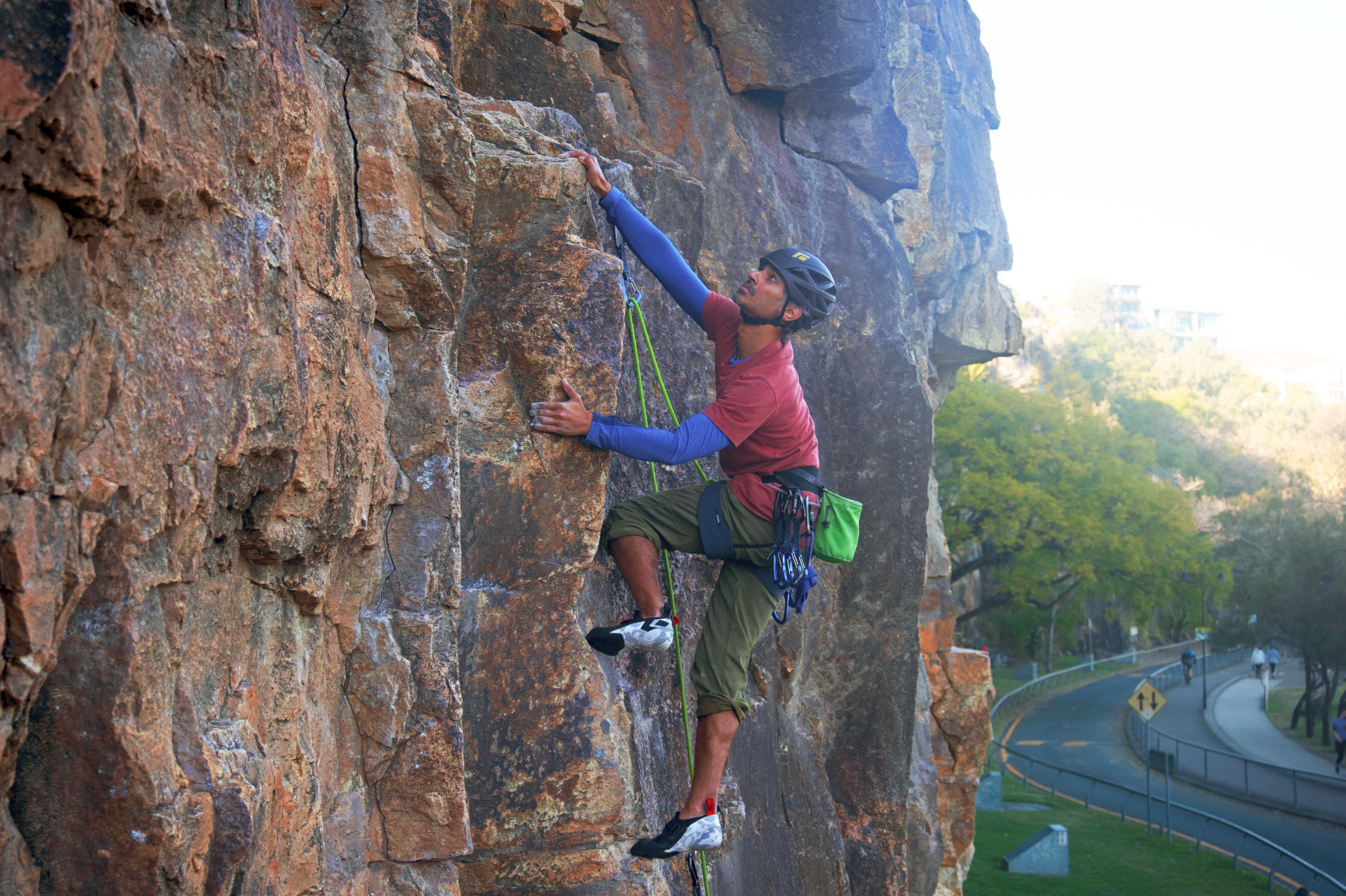It goes without saying that your harness is a very important part of keeping you safe when climbing, and with so many options available it can seem overwhelming. While all our harnesses at Pinnacle Sports meet the appropriate safety standards and specifications, it’s worth taking the time to choose the harness that best suits your needs now, and into the future, as if you take care of your harness you should have it for several years. So what’s the difference between a basic harness and what makes a harness the bees knees? This guide is here to help.
Gear Loops
Most harnesses come with 4 gear loops as a standard which is perfect for sport climbing. Some harnesses will have a fifth gear loop at the centre which adds additional racking space for gear. The Petzl Aquila is a great example of this, with two semi-rigid front gear loops, two flexible rear gear loops, and a fifth large rear gear loop that's ideal for racking bulky gear.
If you’re going to be adventuring into the world of trad climbing, sport multi-pitch or guiding you will want at least four reasonably-sized gear loops, perhaps more. The Ocun Wee Bee Big Wall has an amazing 7 gear loops. The additional racking space allows easier organisation of gear, and this style of harness is designed to keep you hanging comfortably on big adventurous days out.
Belay Loops & Tie-in Points
Unlike a typical group style harness, most climbing harnesses feature a belay loop that’s separate from the tie-in points. The belay loop is the strongest part of the harness and is generally only used, as the name suggests,to belay from. There is debate around whether or not personal safety lanyards should be attached to the belay loop or the tie-in points, with many manufacturers recommending that the tie-in points be used instead. If in doubt, consult the instruction manuals of your specific equipment.
Some lightweight harnesses forego the belay loop entirely and only have two tie-in points. These are great for those hardcore climbers who don’t want to carry any extra grams, but the average climber is probably going to see more downside than benefit in this style of harness as it makes belaying difficult or even impossible in some cases.
Some big wall harnesses, like the Black Diamong Long Haul, have two separate belay loops: when you’ve got more gear than you can shake a nut tool at hanging off you, the extra belay loop really helps with organisation.
Adjustability
Adjustability – how much do you want? Lightweight sport harnesses, like the Edelrid Ace, will often have fixed leg loops which assists with keeping the grammage under control.
Adjustable leg loops is a personal preference. They offer a great range of size which is advantageous if climbing in variable weather conditions as they will more easily accommodate layered clothing. They’re also preferable if your thigh to waist ratio falls outside of what the manufacturer has allowed for in the fixed leg options.
If you’re sharing a harness, have growing kids, like a harness that’s easy to centre, or is someone who tends to fluctuate in size then a double buckle harness might be just the ticket. These harnesses usually come in 2 sizes which will range from an extra small to mediumish and mediumish to extra large. The dual buckles make centering the harness quicker as you’re equalising the waist belt from 2 sides. A classic example in this style is the Petzl Corax.
Want to introduce friends to top rope climbing or do you run an organization that caters for multi ages and sizes? A group harness will allow you to fit multiple sizes in the one harness from children to adults of a waist of around 95 to 120cm (sizing varies, refer to the manufacturer’s specifications) The disadvantage of this style of harness is that they are not the most comfortable items (usually no padding). This style of harness is also not suitable for lead climbing.
Weight & Comfort
When you’re pushing your physical and mental limits on a tough climb, every gram counts. But when you’re spending all day in your harness while on a big wall adventure, you might be willing to carry a bit of extra weight for that additional support and comfort. Like most things in life, there’s always a trade off, and it's a really personal choice as to what you prioritise here.
Kids' Harnesses
Don’t let kids stop you from climbing, pack them up and take them to a child friendly crag.
Depending on their age there are two styles of harness available: these being full body harnesses or sit harnesses (miniature versions of a padded adult harness).
Full body harnesses are suitable for younger children usually under 5 / 6 years (check the manufacturer’s sizing). This style of harness offers more support particularly when children this age are usually top heavy. Note that these harnesses are suitable for a weight range of up to 40 kg. Check out the Edelrid Fraggle III.
For older children usually in the age bracket of 5-10 years a kids specific harness will work a treat. These harnesses have a weight limit of 40-50kg (this may vary per manufacturer). Black Diamond make the Momentum Kids and Edelrid make the Finn III.
Another option for kids or tweens or if you’re sizing harnesses for multiple kids would be a double buckle harness in a Extra Extra Small to Small or Extra Small to Medium as this gives a wider range of adjustability. This would also be multi purpose if you took friends out (providing it fits their waist). One example of this style of harness is the CAMP Energy CR4.
Lifespan
As a general rule of thumb harnesses have a life span of 10 years from the date of manufacture, even if the harness is not used at all. This time frame excludes wear and tear. Note some manufacturers are now including a shelf life as well as an in use life. Check the product manual of each specific manufacturer to check what this period is. Usage and care of your harness will determine the exact amount of time that you get out of your harness. As with all safety equipment, it’s the responsibility of the user to inspect before and after use.
Of course, like with climbing shoes, the only way to be sure of comfort and sizing is to try it on! Pinnacle has a rope attachment so you can hang in the harness in store, making it super easy for you to pick the harness that's right for you. Click here to browse our range of climbing harnesses.
Note that as harnesses are safety equipment, we do not accept returns on this gear for change of mind or incorrect sizing as we can no longer verify the history of the item. This does not include manufacturer defects covered under warranty claims.
Looking for more great reads? Subscribe to our newsletter to stay up to date with the latest climbing tech, crag recommendations and upcoming events.







